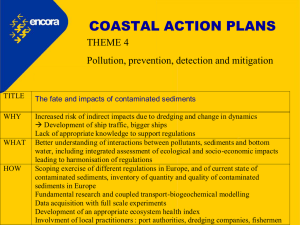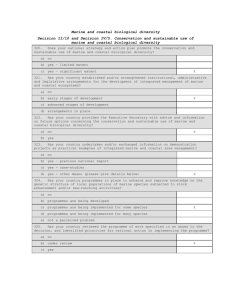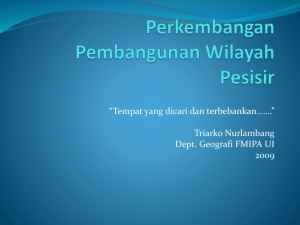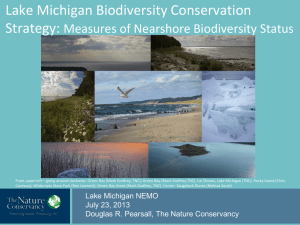the sandag nearshore coastal zone mapping project
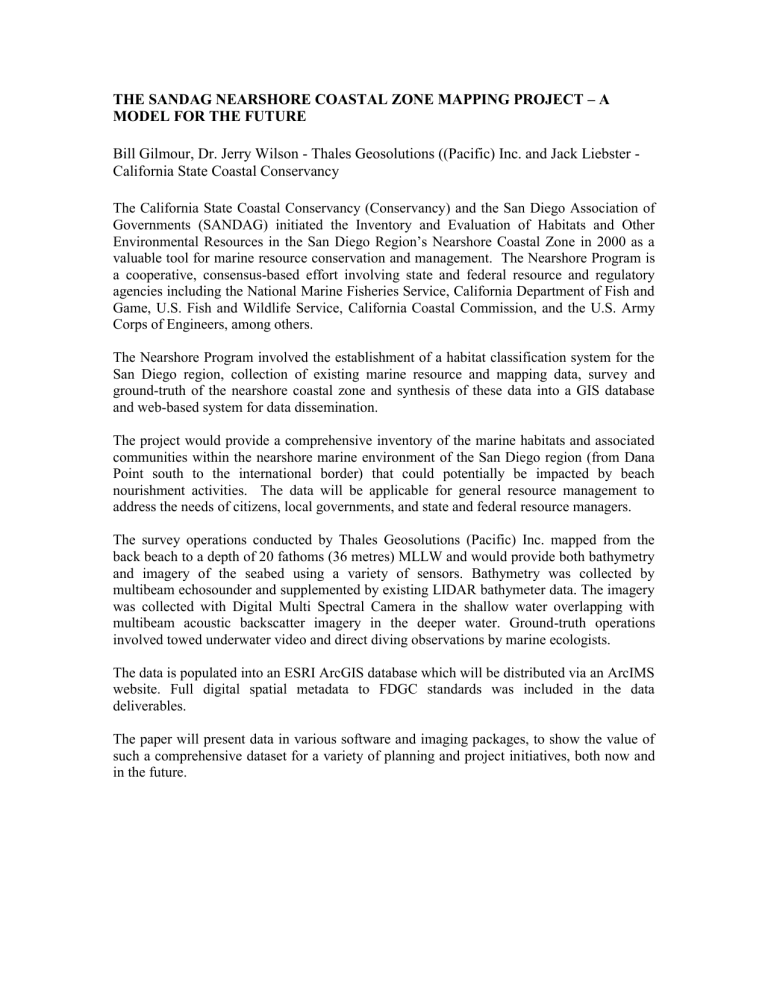
THE SANDAG NEARSHORE COASTAL ZONE MAPPING PROJECT – A
MODEL FOR THE FUTURE
Bill Gilmour, Dr. Jerry Wilson - Thales Geosolutions ((Pacific) Inc. and Jack Liebster -
California State Coastal Conservancy
The California State Coastal Conservancy (Conservancy) and the San Diego Association of
Governments (SANDAG) initiated the Inventory and Evaluation of Habitats and Other
Environmental Resources in the San Diego Region’s Nearshore Coastal Zone in 2000 as a valuable tool for marine resource conservation and management. The Nearshore Program is a cooperative, consensus-based effort involving state and federal resource and regulatory agencies including the National Marine Fisheries Service, California Department of Fish and
Game, U.S. Fish and Wildlife Service, California Coastal Commission, and the U.S. Army
Corps of Engineers, among others.
The Nearshore Program involved the establishment of a habitat classification system for the
San Diego region, collection of existing marine resource and mapping data, survey and ground-truth of the nearshore coastal zone and synthesis of these data into a GIS database and web-based system for data dissemination.
The project would provide a comprehensive inventory of the marine habitats and associated communities within the nearshore marine environment of the San Diego region (from Dana
Point south to the international border) that could potentially be impacted by beach nourishment activities. The data will be applicable for general resource management to address the needs of citizens, local governments, and state and federal resource managers.
The survey operations conducted by Thales Geosolutions (Pacific) Inc. mapped from the back beach to a depth of 20 fathoms (36 metres) MLLW and would provide both bathymetry and imagery of the seabed using a variety of sensors. Bathymetry was collected by multibeam echosounder and supplemented by existing LIDAR bathymeter data. The imagery was collected with Digital Multi Spectral Camera in the shallow water overlapping with multibeam acoustic backscatter imagery in the deeper water. Ground-truth operations involved towed underwater video and direct diving observations by marine ecologists.
The data is populated into an ESRI ArcGIS database which will be distributed via an ArcIMS website. Full digital spatial metadata to FDGC standards was included in the data deliverables.
The paper will present data in various software and imaging packages, to show the value of such a comprehensive dataset for a variety of planning and project initiatives, both now and in the future.



